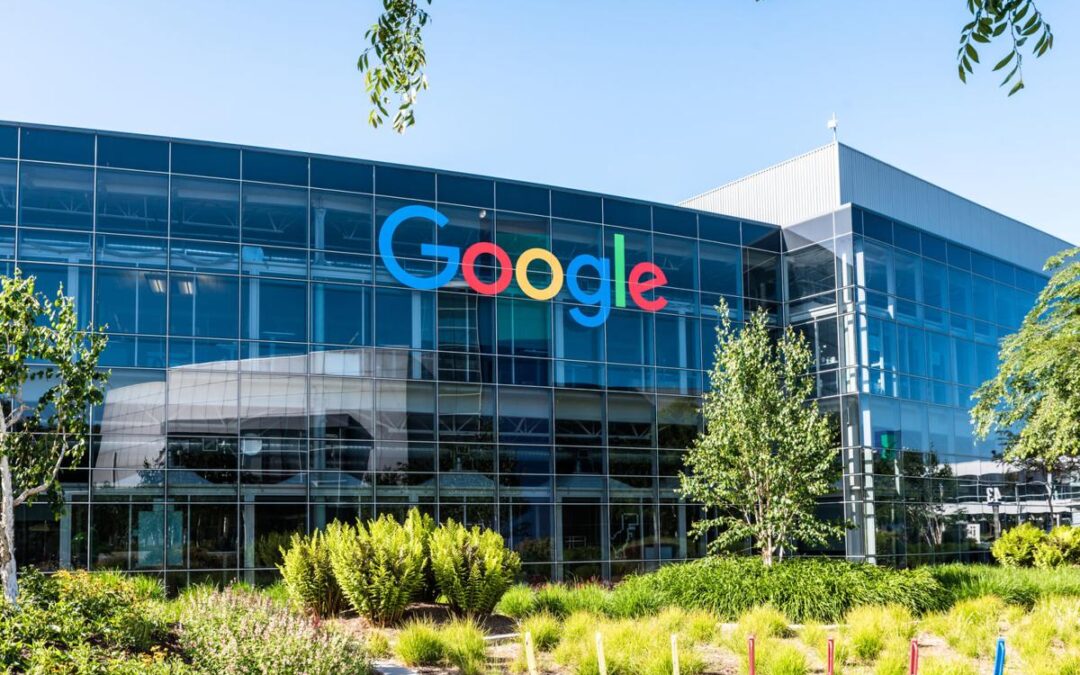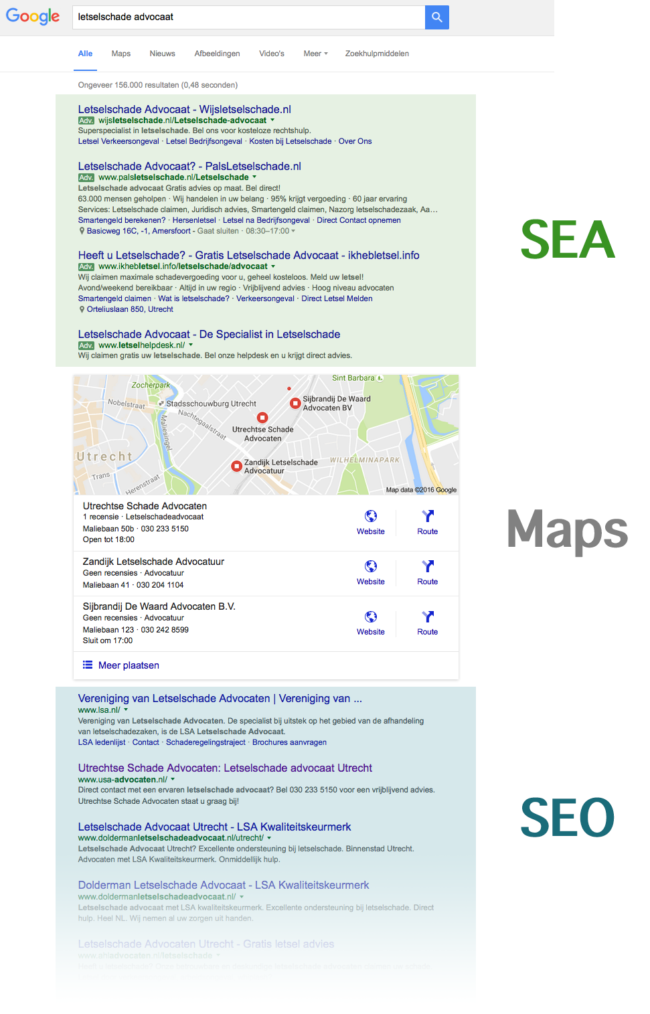
by Vo Nguyen | Feb 3, 2023 | SEA, SEO
Het verschil tussen SEO en SEA
Introductie
Bij het optimaliseren van uw website voor zoekmachines is het belangrijk om te begrijpen wat het verschil is tussen SEO(zoekmachine-optimalisatie) en SEA(zoekmachine adverteren). Beide zijn effectieve methoden om uw online zichtbaarheid te verbeteren en uw doelgroep te bereiken. Maar elk heeft zijn eigen unieke voordelen en uitdagingen.
SEO: zoekmachine optimalisatie
SEO, of zoekmachine optimalisatie, richt zich op het verbeteren van de organische zoekresultaten van uw website. Het gaat hierbij om het verbeteren van de technische aspecten van uw site en het creëren van kwalitatieve en relevante content. Door deze verbeteringen aan te brengen, stijgt uw website in de organische zoekresultaten van zoekmachines zoals Google. Een belangrijk onderdeel van SEO is het gebruik van zoekwoorden en trefwoorden die relevant zijn voor uw bedrijf en uw doelgroep. Het is van groot belang om deze trefwoorden op een natuurlijke manier in de content van uw site te verwerken, zodat zoekmachines begrijpen wat uw website inhoudt.
SEA: zoekmachine adverteren
SEA, of zoekmachine adverteren, richt zich op het kopen van betaalde zoekresultaten op zoekmachines. Hierbij plaatst u advertenties boven of naast de organische zoekresultaten, die door middel van zoekwoorden en targeting specifiek gericht zijn op uw doelgroep.  Foto van sageon.nl Het grootste voordeel van SEA is dat u snel en effectief resultaat kunt boeken. U kunt uw doelgroep bereiken op het moment dat zij actief op zoek zijn naar producten of diensten die u aanbiedt. Bovendien kunt u uw advertentie-uitgaven gemakkelijk bijstellen, zodat u altijd het meest effectieve resultaat behaalt.Verschil tussen SEA Maps SEO
Foto van sageon.nl Het grootste voordeel van SEA is dat u snel en effectief resultaat kunt boeken. U kunt uw doelgroep bereiken op het moment dat zij actief op zoek zijn naar producten of diensten die u aanbiedt. Bovendien kunt u uw advertentie-uitgaven gemakkelijk bijstellen, zodat u altijd het meest effectieve resultaat behaalt.Verschil tussen SEA Maps SEO
SEO en SEA: een samenhangende aanpak
Het is belangrijk om te realiseren dat SEO en SEA niet als vervanging voor elkaar moeten worden gezien, maar juist als aanvulling op elkaar. Door een combinatie van beide te gebruiken, kunt u uw online zichtbaarheid maximaal verbeteren. Een goed voorbeeld is het gebruik van zoekwoorden. Wanneer u via SEA zoekwoorden aankoopt, kunt u deze ook gebruiken bij uw SEO-inspanningen. Hierdoor creëert u een samenhangend en effectief zoekmachine-optimalisatieplan.
Conclusie
In conclusie is het belangrijk om te realiseren dat SEO en SEA elk hun eigen unieke voordelen en uitdagingen hebben bij het optimaliseren van uw website voor zoekmachines. Terwijl SEO zich richt op het verbeteren van de organische zoekresultaten door technische verbeteringen en kwalitatieve en relevante content, richt SEA zich op het kopen van betaalde zoekresultaten. Echter, het is belangrijk om te realiseren dat SEO en SEA niet als vervanging voor elkaar moeten worden gezien, maar juist als aanvulling op elkaar. Door een samenhangende aanpak te hanteren met beide methoden, kunt u uw online zichtbaarheid maximaal verbeteren. Wij hopen dat dit artikel u een beter begrip heeft gegeven van het verschil tussen SEO en SEA en hoe beide methoden samen kunnen werken om uw online zichtbaarheid te verbeteren.

by Vo Nguyen | Jan 30, 2023 | SEO
Introduction to SEO and its importance
Search Engine Optimization (SEO) is the process of improving a website’s visibility on search engines like Google. The goal of SEO is to rank higher on search engine results pages (SERPs), increase website traffic, and ultimately drive more business. In today’s digital age, having an online presence is crucial for businesses of all sizes. A strong SEO strategy can help you reach more potential customers and gain a competitive advantage in your industry.
- Introduction to SEO and its importance
- Keyword Research
- On-page Optimization a. Content Optimization b. Technical Optimization
- Off-page Optimization a. Link Building b. Social Media Marketing
- Measuring and Improving SEO Results
Keyword Research
Keyword research is the first step in creating an effective SEO strategy. Keyword research involves finding keywords and phrases that are relevant to your business and popular among users. To get started with keyword research, brainstorm a list of keywords related to your business. Then use tools like Google’s Keyword Planner or SEMrush to find keywords with high search volume and low competition. Once you have your list of keywords, use them throughout your website, including in your page titles, headings, and content.
On-page Optimization
On-page optimization refers to the changes made directly on your website to improve its ranking and visibility on search engines. On-page optimization includes two main areas: content optimization and technical optimization.
Content Optimization
Content optimization involves creating high-quality, relevant, and engaging content for your website. Use your keywords naturally throughout your content to make it more relevant to search engines and users.
Technical Optimization
Technical optimization involves optimizing the technical aspects of your website, such as its code and structure, to make it more search engine friendly. This includes tasks like improving page loading speed, optimizing images, and fixing broken links.
Off-page Optimization
Off-page optimization refers to the activities that take place outside of your website to improve its visibility and ranking on search engines. Off-page optimization includes two main areas: link building and social media marketing.
Link Building
Link building involves acquiring links from other websites to your own. Search engines view these links as a vote of confidence in your website, and they can improve your website’s visibility and ranking on SERPs. To build high-quality links, create valuable and shareable content that other websites will want to link to. Reach out to other websites in your industry and ask for links, and participate in online communities to build relationships with other website owners.
Social Media Marketing
Social media marketing involves promoting your website and content on social media platforms like Facebook, Twitter, and Instagram. Social media can drive traffic to your website and improve your online visibility, which can positively impact your SEO. To get started with social media marketing, create a social media account for your business and start posting regular updates about your business and industry. Engage with your followers and participate in relevant online communities to build relationships and drive traffic to your website.
Measuring and Improving SEO Results
The final step in creating an effective SEO strategy is measuring and improving your results. Use tools like Google Analytics to track your website’s traffic, rankings, and conversion rates. Regularly review your results and make changes to your SEO strategy as needed. Experiment with different tactics, such as creating new content or building new links, to find what works best for your business. By following these steps, you can create a comprehensive SEO strategy that will help you improve your website’s ranking and visibility on search engines and drive more traffic to your business
If you are too lazy to get into all of this, contact Yumex. We will do it for you!
.

 Foto van sageon.nl Het grootste voordeel van SEA is dat u snel en effectief resultaat kunt boeken. U kunt uw doelgroep bereiken op het moment dat zij actief op zoek zijn naar producten of diensten die u aanbiedt. Bovendien kunt u uw advertentie-uitgaven gemakkelijk bijstellen, zodat u altijd het meest effectieve resultaat behaalt.Verschil tussen SEA Maps SEO
Foto van sageon.nl Het grootste voordeel van SEA is dat u snel en effectief resultaat kunt boeken. U kunt uw doelgroep bereiken op het moment dat zij actief op zoek zijn naar producten of diensten die u aanbiedt. Bovendien kunt u uw advertentie-uitgaven gemakkelijk bijstellen, zodat u altijd het meest effectieve resultaat behaalt.Verschil tussen SEA Maps SEO